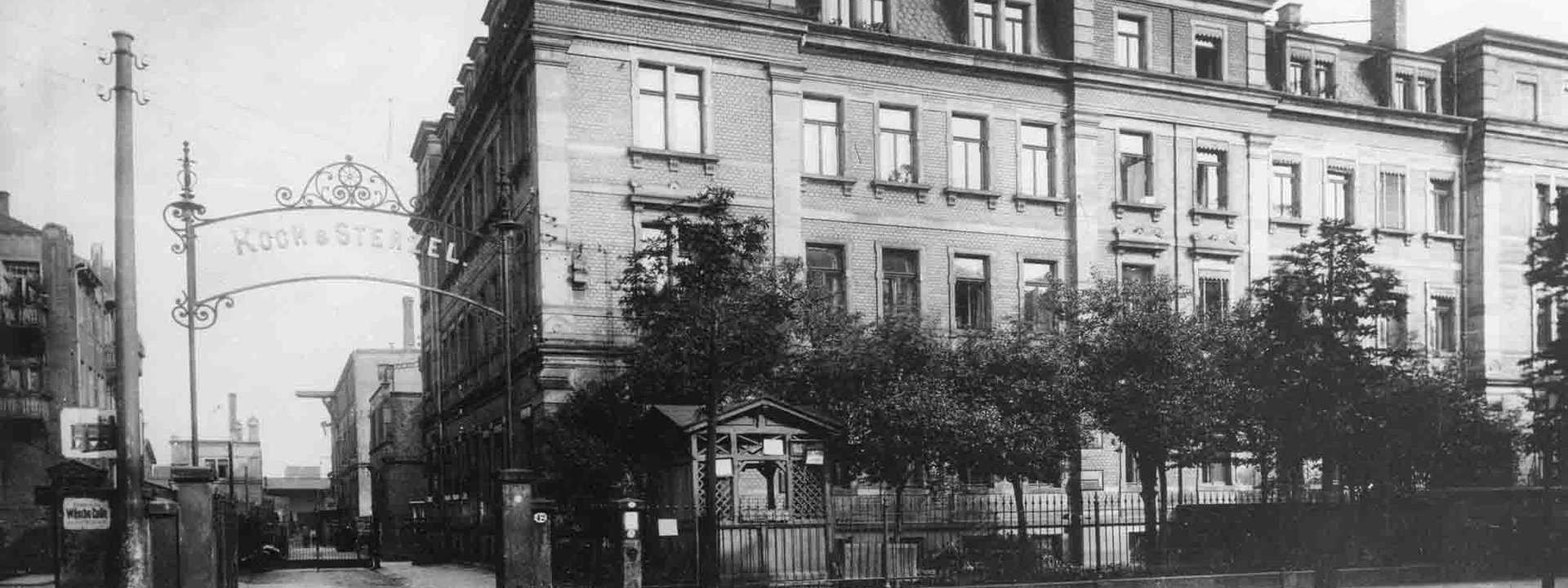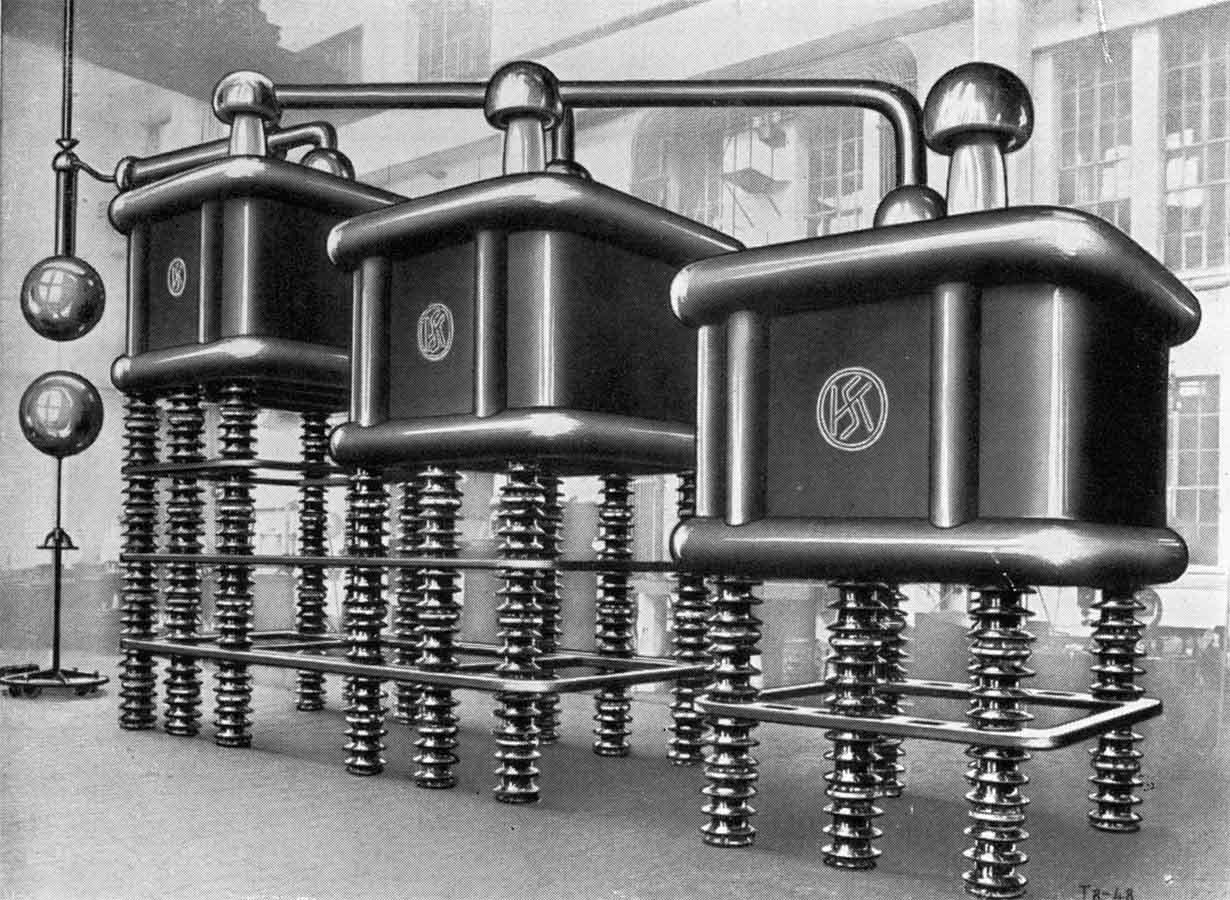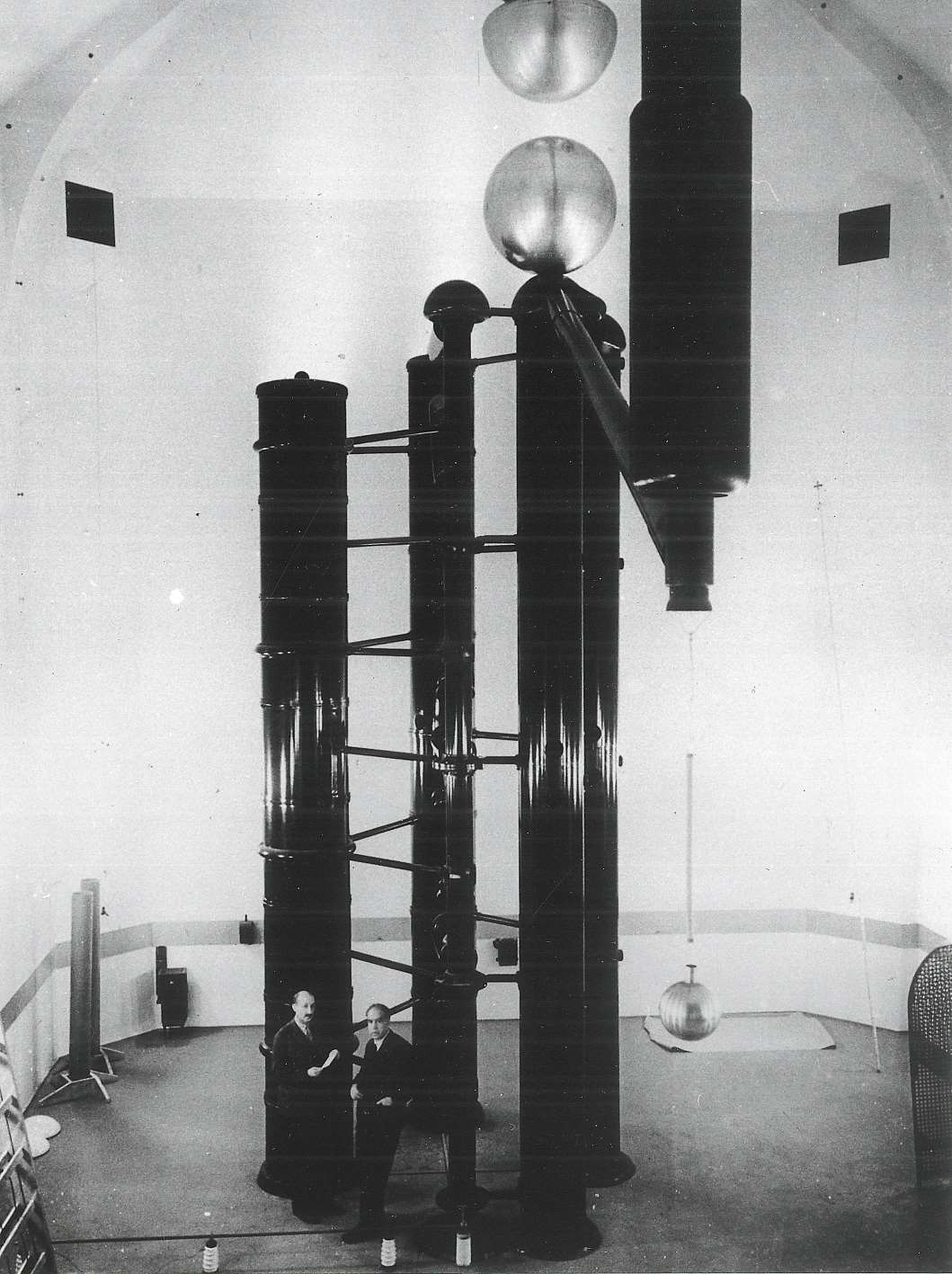-
Impulses
Impulses
- Portfolio
-
Career
Career
-
Company
Company
-
Calibration
Calibration
The early years - how everything began
Franz Joseph Koch and Kurt August Sterzel founded the company "Koch & Sterzel, Spezialfabrik wissenschaftlicher Apparate und Instrumente oHg" on 1 October 1904 in Dresden. At this time they already owned eight patents in the areas of electrical engineering and medical technology. The company was initially set up with eight employees, but just ten years later this had already risen to 200. In 1918 it owned over 50 patents and 115 utility models. The company grew rapidly and was converted to a stock corporation in 1920 without involvement from banks. Its opening balance was 1.3 million Gold Marks, and all shares were held by the families Koch and Sterzel.

But rapid growth meant that the company urgently needed to move to larger premises. At the site of the former airfield in Kaditz in Übigau, a new factory offering 30,000 m² of space to produce transformers was constructed from 1922 to 1923. The factory evolved into one of the leading companies in the field of high-frequency technology, testing systems, measuring transducers and construction of X-ray apparatus. In 1943 the company had 1800 employees. By the time Franz Joseph Koch died in 1941, Koch & Sterzel AG had already earned itself an excellent international reputation. The site in Zwickauer Straße was completely destroyed during air raids in February and April 1945. Despite partial destruction in April 1945 and the subsequent period of forced administration under the rule of the Soviet Union, production continued in Übigau until the site was decommissioned. In 1948 Koch & Sterzel AG was liquidated and the state-owned company VEB Transformatoren- und Röntgenwerk was founded in its place. In 1950 the company was then re-established in Western Germany in Essen under the name K & S Röntgenwerk GmbH & Co. KG, renamed in 1996 as K & S Röntgenwerk Bochum GmbH & Co. KG. The company has been operating as Spellman High Voltage Electronics GmbH since 2012 and continues to manufacture and sell X-ray generators under the brand name K & S Röntgengeneratoren.
Outstanding product developments

AC cascade
Our history is characterized by continuous innovation. Examples of this include the cascade circuits required to generate high AC voltages for test transformers. As a global first, an AC cascade with an output voltage of 1 MV was designed and built for TH Dresden in 1928 based on three 333 kV transformers.

Push-pull cascade
In 1929 two AC cascades with 1 MV output each were operated in counter-phase to each other to produce the first 2 MV AC voltage system. However, these so-called push-pull cascades were not pursued any further, as the progress being made in the field of high-voltage-resistant insulations soon made transformers with test voltages of up to 700 kV possible.

But it was not all about electrical engineering. The picture shows nuclear physicists and Nobel Prize winners George Hevesy and Niels Bohr next to the world's first 1 MV DC high-voltage system at the Institute for Theoretical Physics at the University of Copenhagen, where this system was used to, among others, supply power to the cyclotron magnet.
After finishing secondary school at the Realgymnasium, Franz Joseph Koch completed a three-year commercial apprenticeship before joining his father’s company. He studied electrical engineering in his spare time, acquiring extensive knowledge in the process. In 1901 he invented the mechanical rectifier (pendulum rectifier) for low voltage applications, followed in 1903 by the synchronous high-voltage rectifier. In 1914 he was appointed to the role of professor at Technische Hochschule (TH) Dresden, which is today known as the Dresden University of Technology. In 1926 he was awarded the title “Dr.-Ing. E.h.” at TH Dresden, and in 1929 he became an Honorary Senator at TH Stuttgart.
Alongside the successes of his main career, Franz Joseph Koch also had a real passion for designing and building violins. Together with his violin making company “Geigenbau Professor F.J. Koch GmbH”, he built several thousand “Koch violins” from the company's premises at Prager Straße 6 in Dresden between 1919 and 1945, when the building in which the company was housed was destroyed.
Kurt August Sterzel studied mechanical and electrical engineering from 1896 to 1900 at TH Dresden. As a graduate engineer he improved the rectifier circuits and components designed by his friend Franz Joseph Koch. In 1904 he was awarded his first patent for an X-ray tube, followed by the title “Dr.-Ing.” at TH Dresden in 1922. In 1928, 1930 and 1931 he obtained further patents for a control unit, a dry rectifier and a table-top X-ray device. From 1905, Kurt August Sterzel was an active member of VDE, the German Association for Electrical, Electronic & Information Technologies, where he was the publisher responsible for publishing Elektrotechnische Zeitung (Electrical Engineering Periodical) until 1933.

We are here for you. Wherever you are.
Looking for the right contact partner?
Do you have a concern, but don't know whom you should contact? You will find that information in our contact overview. That's a promise.


